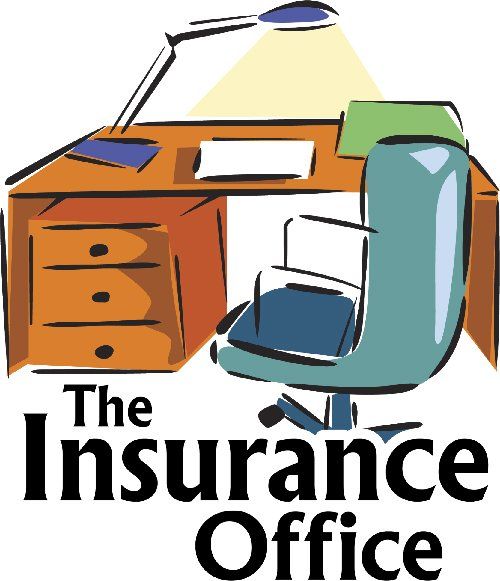What Is Term Insurance and Is It Right For You?
Getting life insurance could provide your loved ones with financial protection from the loss of your income after you’re gone. More than 40 percent of American households (that’s 4 out of 10) would feel a financial impact within six months of the primary wage earner’s death, according to LIMRA. So, money from an insurance policy that could help your family cover expenses like a mortgage or car loan may be reasons to consider getting a term life insurance plan. But what is term insurance anyway, and how do you know if it’s right for you?
Term Insurance Basics
Term insurance is a type of life insurance plan that provides coverage for a specific length of time. Coverage length can be as little as one year (though rarely offered), 5, 10, 20, or up to 30 years. The main feature of a term insurance plan is that a death benefit is paid out to the beneficiary if the insured dies with an active policy.
Let’s look at an example of how this works. Policyholder Jack has a 10-year term plan valued at $250,000 with an expiration date of December 31, 2026. If Jack were to die on December 31, 2026, and his policy is active, then Jack’s beneficiary could receive the full death benefit amount of $250,000.
If however Jack dies a day later on January 1, 2027, and the policy wasn’t set up to renew, his beneficiary would not receive any payout.
Term Insurance at a Glance
- Offers affordable life insurance coverage for when you need it
- Coverage option without medical exam available
- Choose a 5-, 10-, 15-, 25-, or 30-year plan
- Typically suitable for younger persons and families to help protect against lost income if breadwinner dies
- Plans don’t have a cash value investment, which usually makes the cost lower than permanent life insurance
Is a Term Plan Right For Me?
It depends on your needs. Term insurance is essentially a temporary life insurance plan and is typically used to meet future short-term needs. Money set aside to pay for your child’s college education, in case something were to happen to you, is a short-term need that a term life policy could be suitable for.
Understanding what is term insurance is important in knowing if it’s the right plan for you, so here are some things to consider that may help you decide:
Your budget: one of the attractive features of term life insurance is that it’s usually inexpensive when you initially get the coverage. So if your monthly income isn’t that much more than your monthly expenses, this plan may be a good fit for your budget.
Your family life: if you have young children or other dependents who rely on your income, then you generally need to have a lot of life insurance coverage, according to a publication from ConsumerReports. Having a young family is usually a time when you need the most death benefit. So a term policy could allow you to purchase a greater amount of coverage for the most ‘bang-for-your-buck’.
Your debt: the amount of time it would take to pay off your outstanding debts could help you decide if term coverage is right for you. Let’s say you have a car note that will take another four years to pay off, credit card debt that could be paid off in two years, and a mortgage that has 15 more years of payments left. Using this example, your short-term future debt expenses will last at least 15 years. This length of time fits within the range of a term plan, which is usually 5 to 30 years.
Do I Need to Take a Medical Exam?
If you get a simplified issue policy, then you don’t need to visit a doctor to complete a physical or have lab work done. Your coverage eligibility is based on your answers to a few health questions.
However, if you want to take advantage of getting a lower premium because you’re in good health, then you could choose to have a fully underwritten policy. This type of policy requires that you do a complete physical exam and lab work before your policy can be issued.
How Much Does It Cost?
The cost of a term insurance policy is dependent on factors like your age, health, if you’re a smoker/nonsmoker, and the amount of death benefit you choose. There are other factors that can influence your term life insurance quote. But like many insurance policies, premiums are generally lower the younger and healthier you are.
Using policyholder Jack as an example, let’s look at how his age and health could affect the cost of a term plan:
If Jack is in good health and buys a policy with a fixed annual premium and death benefit of $250,000 at age 35, he might pay $215 a year in premiums. If Jack waits until he’s 50 years-old, but still in good health, he might pay around $645 annually to get the same coverage. By age 65, this same policy could cost Jack approximately $3,870 per year.
Still need to know more about what a term insurance plan is to see how it compares to the cost of permanent life insurance?
Let’s look at an example on the difference in cost.
If at age 35, Jack decides he wants to buy a permanent life insurance policy with the same benefit amount of $250,000, Jack could be looking at about $2,150 in annual premium costs—approximately 10 times the amount of his annual $215 premium for a term life policy.
How Much Term Life Coverage Should I Get?
The amount of coverage you need depends on factors like your age, marital status, number of dependents, and living expenses. Some financial sources like CNN Money suggest that your death benefit should be 7 to 10 times greater than your annual salary. This may work for people over 40-years-old who typically need less death benefit because their children are older. But this may not be sufficient for a young married couple with small children, whose death benefit needs are much greater. For a young family in their 20s, insurance companies usually allow a death benefit that’s up to 30 times greater than their annual salary, while a young family in their 30s could get a death benefit up to 20 times above their yearly wages.
Some things you would want to keep in mind when estimating how much term life coverage you should get are:
- The amount of income or type of lifestyle you want to provide for your spouse and/or dependents
- How long you expect your children to be at home—do they have several years of schooling left or are they about to graduate and move out on their own?
- Amount of debt you have—mortgage, car loans, student loans, etc.
- Other income you receive from things like rental properties
- Money you have in assets—savings, mutual funds, stocks, or retirement accounts
Once you come to an approximate number of how much money you would need to meet your family’s future expenses on a monthly or yearly basis, subtract any money you have in assets and additional income you get from other sources. The resulting number is the gap that you would want to fill with life insurance.
If this number is $30,000 for instance, then you may need 7 to 10 times that amount in term insurance coverage, which would be $210,000 to $300,000. If you need up to 30 times your annual wage, that would be $900,000.
Another way to determine how much coverage you should get is to look at:
- The immediate financial needs your family would have upon your death—funeral expenses, rent, mortgage, medical bills, etc.
- The amount of money it would take to sustain your family for a set number of years. For instance, how much it would cost to support your kids until they’re adults or your spouse until he or she has access to retirement funds.
By breaking it down into these two categories: immediate expenses and future expenses, you may find it easier to calculate your insurance needs. A nonprofit organization, called Life Happens, offers an online life insurance calculator you can use to estimate how much coverage you should get based on your family’s expenses.
Are There Different Types of Term Insurance?
Yes. There are two types of term life insurance plans.
Level Premium Term: this type of policy usually guarantees that your premium rate will stay the same from the time you enroll to the end of the policy term. So if you get a 20-year policy with an annual premium of $250, you may have this rate for all 20 years. Almost all term insurance sold are level premium term plans because it offers the best life insurance protection at an affordable cost.
Annual Renewal Term: this type of term plan is rarely offered to individual consumers because it provides the least protection to meet a family’s insurance needs. Annual renewable term policies are usually available through state insurance departments for business life insurance purposes.
Learn more about term life insurance types to see which one best fits your needs.
Do All Term Insurance Plans Pay Out The Same?
No. There are three types of payout structures available for term life insurance plans.
Level Term Coverage: level here means that the death benefit amount for the policy stays the same throughout the plan term. Let’s say you have a 10-year term with $100,000 in death benefits. Regardless if you die in year one, five, or 10, your beneficiary still gets the full benefit amount. This is the type of coverage offered by most insurers.
Increasing Term Coverage: this type of coverage is rarely available; most insurance companies don’t offer these policies to individual consumers. Policies are usually offered through group life insurance plans that an employer would provide. How it works is the death benefit increases over the length of the policy at a set rate. For example, a 10-year plan with a death benefit of $100,000 could be set to increase by $10,000 each year. With this payout structure, you should keep in mind that as the death benefit increases each year, your premium will also likely increase.
Decreasing Term Coverage: this is another rare type of coverage for individual consumers that is not provided by the majority of life insurance companies. With this coverage, you can set the death benefit to decrease by a certain amount each year. For example, you can set your $100,000 death benefit to decrease by $5,000 a year over the course of the term. This payout structure may be a good match if you expect your living expenses to decrease within the policy term.
What Happens When the Term of the Policy Ends?
It depends. If you elect to renew the policy, then you will continue to have coverage for however many years you select (1, 5, 10, 20, or more). Keep in mind that insurance companies typically only provide coverage up to a certain age, usually 70 or 80, according to the Texas Department of Insurance. So if you’re 55 and want to get a 30-year term insurance plan, that would put you at age 85 by the time the plan expires—so an insurance company may only let you select a plan that has a less than 25-year term.
Another thing to keep in mind is that your premium may increase when you renew, even if you initially selected a level premium term policy. This is because the lock-in rate for your premium is only good for the term of the original policy.
Let’s say you had a 30-year term plan with a guaranteed premium rate of $300 a year. After the 30 years expire, you elect to renew for a 10-year term. Your premium for the 10-year term could stay the same, but it’s more likely that it will increase.
The Texas Department of Insurance also notes that an insurance company must renew your policy even if you no longer meet their underwriting requirements. This means that you can extend your coverage, despite your current health condition, without the need to pass a medical exam.
Another thing that could happen after your term plan ends it that it could convert to a permanent life insurance policy, even if your health has changed. According to Investopedia, this is typically a built-in feature for most term plans. Before you purchase a plan, you should check with your insurance agent to see if this feature is included.
When you convert term coverage to permanent insurance, you usually can keep the same coverage amount. So if you had a $250,000 term plan, you could convert that same amount to a permanent life plan—typically without having to provide answers to any insurance questions about your health history. The ability to convert from term to permanent coverage can be a major advantage to you, especially if your health has declined.
This article has covered a lot on “what is term insurance”, but to get more answers that apply to your specific financial and insurance coverage needs, I recommend speaking with a knowledgeable life insurance agent.
Give me a call today so that I can help answer your specific questions on choosing a term life insurance plan today!
HMIA002733






